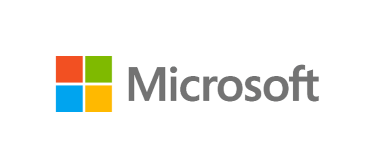How AI-powered systems are reshaping organisational strategy and redefining the future of work.
Bulukani Mlalazi – Principal Consultant for AI (ADAICO)
Executive Summary
The rise of artificial intelligence (AI) is ushering in a new era for organisations, one where businesses are increasingly “AI-operated but human-led.” The concept of the “Frontier Firm,” as explored in recent research, highlights a transformative blueprint for companies to integrate AI agents into their operations, enabling rapid scaling, enhanced agility, and unprecedented value creation. This article examines the critical themes and trends shaping this evolution, including the three phases of AI adoption, the role of digital labour, and the need for organisations to rethink their strategies and structures. By embracing these insights, organisations can position themselves to thrive in an AI-enhanced future.
Introduction
A recent report into the impact of AI, entitled 2025: The Year the Frontier Firm Is Born (https://www.microsoft.com/en-us/worklab/work-trend-index/2025-the-year-the-frontier-firm-is-born,) identified 2025 as a pivotal moment in the evolution of businesses. As AI technologies mature and integrate more deeply into organisational workflows, companies are beginning to reimagine their strategies, operations, and structures. The concept of the “Frontier Firm” provides a visionary template for this transformation, blending machine intelligence with human judgment to create agile, scalable, and innovative organisations.
This shift is not just about adopting AI tools—it’s about fundamentally rethinking how work is done. From the integration of AI agents as digital colleagues to the emergence of new organisational models, the trends outlined in the report are set to redefine the future of work.
What is the Frontier Firm?
The Frontier Firm represents a new organisational paradigm where AI agents and humans collaborate seamlessly to achieve business goals. These firms are characterised by:
- Organisation-wide AI deployment: AI is embedded across functions, driving efficiency and innovation.
- Hybrid human-agent teams: Digital labour complements human creativity, enabling faster decision-making and execution.
- Dynamic structures: Traditional hierarchies give way to flexible, goal-oriented teams powered by AI.
The journey to becoming a Frontier Firm unfolds in three phases:
- Phase 1: AI as Assistants: AI tools streamline repetitive tasks, such as scheduling or data entry, freeing humans to focus on higher-value work.
- Phase 2: AI as Digital Colleagues: AI agents take on specific tasks or workflows under human direction, such as generating reports or managing supply chains.
- Phase 3: AI as Autonomous Systems: Fully autonomous AI systems manage entire processes, with humans providing oversight and strategic guidance.
This progression is not strictly linear—many organisations will operate in multiple phases simultaneously, depending on their needs and capabilities.
Why is it Important?
The emergence of the Frontier Firm is driven by several critical trends:
1. The Capacity Gap
Organisations face mounting pressure to increase productivity, but workforce exhaustion and demographic shifts, linked to ageing populations and declining birth rates, are limiting human capacity. AI agents offer a solution by augmenting human capabilities and addressing anticipated labour shortages.
2. AI as the Engine for Scale
AI enables businesses of all sizes to scale rapidly by automating routine tasks and optimising workflows. For smaller players, this reduces traditional barriers to entry, levelling the playing field with larger competitors.
3. Rethinking Organisational Structures
The traditional organisational chart, built around siloed functions, is giving way to the “Work Chart”—a dynamic, outcome-driven model where teams form and disband based on goals. AI agents act as research assistants, analysts, or creative partners, enabling lean, high-impact teams to operate with agility.
4. Human-Agent Collaboration
The integration of AI is not just about efficiency; it’s about elevating the quality of work. Humans bring creativity, judgement, and empathy, while AI provides speed, scale, and precision. Together, they create a powerful synergy that drives innovation and value creation.
Key Themes and Trends
1. AI Democratisation and the Role of Open Source
The report highlights how AI is becoming increasingly accessible, but true democratisation will require the support of the open-source AI community. Open-source innovation can help smaller organisations access cutting-edge tools and capabilities cost effectively, fostering a more equitable AI ecosystem.
2. The Rise of Digital Labour
AI agents are poised to become key members of the workforce, taking on roles traditionally filled by humans. This shift will require organisations to carefully balance automation with human oversight, ensuring accountability and ethical alignment.
3. New Metrics for Success
As hybrid human-agent teams become the norm, organisations will need new metrics to measure performance, such as the “human-agent ratio.” This metric will help leaders optimise the balance between human and digital labour, ensuring that AI is deployed where it adds the most value.
4. Workforce Transformation and Upskilling
AI adoption will create new roles (e.g., AI trainers, multi-agent system designers) while transforming existing ones. Organisations must invest in upskilling their workforce to ensure employees can effectively collaborate with AI systems and adapt to evolving job requirements.
5. Ethical and Societal Considerations
The integration of AI raises important ethical questions, such as how to ensure transparency, fairness, and accountability in decisions facilitated by AI systems. Organisations must prioritise responsible AI practices to build trust with employees, customers, and stakeholders.
Why Should You Care?
The rise of the Frontier Firm is not a distant possibility—it is happening now. Organisations that fail to adapt risk being left behind in an increasingly competitive and AI-driven landscape. By embracing the principles and strategies outlined in the report, businesses can:
- Enhance productivity and innovation through human-agent collaboration.
- Scale rapidly while maintaining agility and focus.
- Build a future-ready workforce equipped with the skills to thrive in the age of AI.
The key is to act decisively, aligning AI adoption with organisational values and long-term goals.
Summary
The concept of the Frontier Firm represents a bold vision for the future of work, one where AI and human capabilities are seamlessly integrated to drive growth, innovation, and value creation. By understanding and embracing the trends shaping this transformation, organisations can position themselves for success in a rapidly evolving world.
As we move towards 2025 and beyond, the question is not whether AI will reshape work—it’s how organisations will strategically harness its potential to lead this change. The time to act is now.




